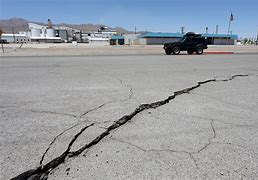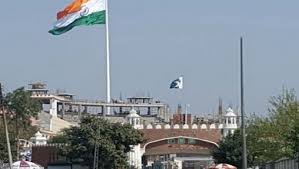World
Pakistan quake causes cracks in World Heritage sites

Islamabad: The 7.5 magnitude earthquake that rocked Pakistan last week caused cracks in the country’s World Heritage sites of Takht-i-Bahi and Jaulian as well as in museums and artefacts of Gandhara Civilization, officials said.
The Takht-i-Bahi, a Parthian archaeological site in Mardan, Khyber Pakhtunkhwa province, and Jaulian ruins of an ancient Buddhist monastery in Haripur district developed cracks following the October 26 earthquake, Dawn online reported.
“The quake caused a lot of damage to the sites and artefacts. After assessment, we would compile a complete report about it,” said Abdul Samad, director of archaeology and museums of Khyber Pakhtunkhwa.
The quake, which also hit India and Afghanistan, killed at least 250 people in Pakistan and damaged properties.
“In Takht-i-Bahi a wall has collapsed and cracks in structure are visible now,” said Samad.
“The inner chamber developed cracks. The wall of the main assembly hall has leaned on one side,” an eyewitness said.
Jamal Garhi, a Buddhist site, which was on tentative list of World Heritage, was the worst affected as the walls have collapsed, Samad said.
Sharing initial reports of the damage compiled by the archaeology department, he said teams were sent out to the sites to assess the damage after the quake.
The site of Jamal Garhi, discovered by Sir Alexander Cunningham in 1848, is located in Mardan district.
Jaulian, another World Heritage site in Khanpur city of Punjab province, was also affected by the quake. The tremor damaged a wall of the monastery and chapel.
“I know the damages are huge and even government would not be able to save these sites on its own,” Samad said, pointing out how little was spent on archaeology in Pakistan.
Chitral museum was also affected by the earthquake as its showcases toppled over and antiques were broken.
One of its walls also collapsed. The walls of Dir and Swat museums also developed cracks and the showcases broke.
“In historic Peshawar museum, a gallery has been affected by the tremor,” said Samad.
Peshawar museum, having a rich and rare collection of Gandhara Civilization, has been established in an old British-era Victorian style building.
Despite having rich archeological sites and artefacts including rare statues of the Buddha, there is no earthquake resistant museum or gallery in Khyber Pakhtunkhwa province.
Gor Khattree, another important site in the middle of Peshawar city, has also been damaged.
World
Lockdowns in China Force Urban Communities to Defy Censorship and Vent Frustration Online

Shanghai’s rich middle class is leading a wave of online dissent over the strict and prolonged lockdowns imposed in various parts of the country. Chinese internet censorship is struggling as patience is wearing thin in many urban centers, coming up with creative forms of online protests.
Social Media Posts Revealing Lockdown Tension in Shanghai
Drawn-out lockdowns are nothing new in China as authorities insist with the nation’s zero-Covid policy since the start of the pandemic. Currently over This time around, however, metropolitan areas like Shanghai are increasingly difficult to keep quiet, given that its more than 25 million residents have seen weeks of total isolation along with food shortages and many other service interruptions.
Dozens of towns and reportedly over 300 million Chinese citizens have been affected by lockdowns of different severity. As expected, urban netizens have been most outspoken over their difficulties by finding creative ways to get around state censorship and bans placed on topics, news comments and spontaneous campaigns.
Shanghai residents have been using mobile proxies and hijacking seemingly unrelated hashtags to talk about healthcare issues, delivery failures and the overall severity of their situation. The “positive energy” that the Chinese government wants to transmit during the recent prolonged series of lockdowns does not come naturally to those counting food supplies and online censors are working hard to filter words, trending topics and undesired social media sharing.
WeChat groups and message threads are under constant monitoring. Posts questioning the zero-Covid approach have been quickly deleted, including by leading Chinese health experts like Dr. Zhong Nanshan. Video footage is soon censored and protests and investigations are quickly made to disappear.
Where this has not worked, officials have exposed banners with warnings and outright threats like “watch your own mouth or face punishment”, while drones have been patrolling the city skies. Yet, if anything, this has led to further tensions and unspoken confrontation with Shanghai’s educated and affluent middle class.
Creative Online Solutions Harnessing Civic Energy
Announcements by Chinese social media that they would be publishing the IP addresses of users who “spread rumors” have not helped either. Tech industry research has shown that much of Asia’s tech-savvy population has a habit of using mobile proxies and other privacy tools, quickly finding workarounds to browse the internet freely and talk to the world about the hottest topics.
The sheer volume of forbidden posts is already a challenge for the very censorship system, experts explain. Unable to track all trending hashtags, state workers overlook topics that speak about the US, Ukraine or other popular news. Linking human rights elsewhere to their situation, Chinese online dissidents establish their informal channels and “hijack” the conversation to share personal or publicly relevant information about the Covid suppression in their town.
Sarcastic and satirical posts still dominate. Others hope to evade the censors by replacing words from famous poems or the national anthem. One thing is certain – social media, when harnessed with the right creativity, has proven its ability to mount pressure on the government in even some of the most strictly controlled tech environments like China.























